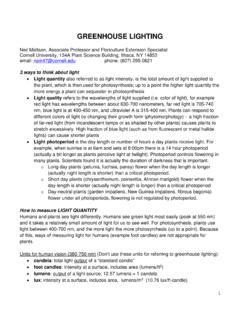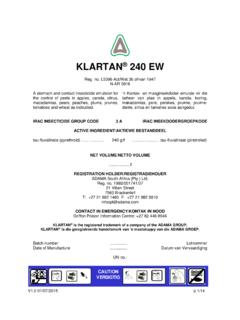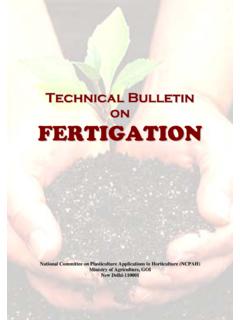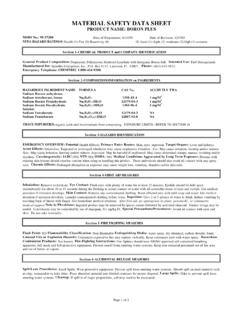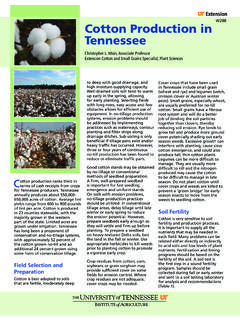Transcription of Identifying Boron Deficiency and …
1 Identifying Boron Deficiency and corrective / preventative Actions Neil Mattson Department of Horticulture, Cornell University Brian Krug Univ. New Hampshire Cooperative Extension Symptoms: Boron (B) is classified as an immobile element in plants; once B has been taken up by the plant it cannot be reallocated to other portions of the plant when Boron availability in the substrate is limited. As with other immobile elements, symptoms first appear on new leaves. Boron is required to build plant cell walls, therefore, when not enough B is available the areas of the plant with rapidly growing new cells ( the growing point and new leaves are affected first).
2 The growing point often aborts (effectively pinching the plant) this leads to proliferation of branches. The branches and new growth are distorted, thick, and brittle; also the upper foliage can exhibit a mottled chlorosis ( scattered yellowing of leaves). When the roots are examined they are often short and stubby. Unlike most nutrient deficiencies that typically exhibit symptoms uniformly across the crop, B symptoms can appear randomly within a crop, section, or even flat/pot. Pansy (above) and petunia (left) demonstrating symptoms of Boron Deficiency . Photos by Brian Krug, University of New Hampshire. Causes: Boron is absorbed by plant roots and moved through the plant in the transpiration stream, and similar to Calcium active water movement through the plant is required to drive B uptake.
3 Conditions that can cause B Deficiency include: low B in tap water or fertilizer, high calcium levels (which can inhibit B uptake), inactive roots (waterlogged or dry soil, cold root-zone), high humidity, soil packed too tightly, or high pH. B Deficiency is most often noted on Pansy and Petunia plants especially those growing with a limited soil volume ( in plug trays or packs). Availability of Boron is Related to Root-Zone pH The graph on the right illustrates relative nutrient availability as a function of substrate pH. High pH favors Boron Deficiency . Occasionally, if tap water contains too much Boron , low pH can favor Boron toxicity.
4 Graph by Doug Bailey University of North Carolina Prevention and Solutions: Prevention is key. While plants that exhibit B Deficiency symptoms usually recover after corrective measures have been taken, the time required for recovery will be lengthy. In many cases B Deficiency occurs early in the germination/seedling stage (in particular with pansy and petunia). At this growth stage symptoms of B Deficiency are subtle and often go unnoticed. Symptoms may become more obvious later in production although the actual Deficiency conditions occurred earlier. Therefore, proactive cultural practices to prevent B Deficiency from developing, especially for crops with a history of B Deficiency , are most effective.
5 Cultural practices that can help prevent B Deficiency from developing include: avoid overwatering plug trays and flats, lowering greenhouse humidity by venting in outside air, using fans to promote air movement, or raising greenhouse/root-zone temperatures. Drench applications with a B containing product can also be used for preventative and corrective measures. Use caution when applying supplemental B; plants require only a small amount of B and over application of B leading to toxicity is easily done. Some products that can be used: Soluble Trace Element Mix ( ) at 4 ounces per 100 gallons (supplies 4 ppm B plus other trace elements) Borax (11% Boron ) at ounces per 100 gallons (supplies 6 ppm B) Solubor (20% Boron ) at ounces per 100 gallons (supplies 6 ppm B) Note: Trade names used herein are for convenience only.
6 No endorsement of products is intended, nor is criticism of unnamed products implied. Cooperative Extension assumes no liability for the effectiveness or results of an product.




